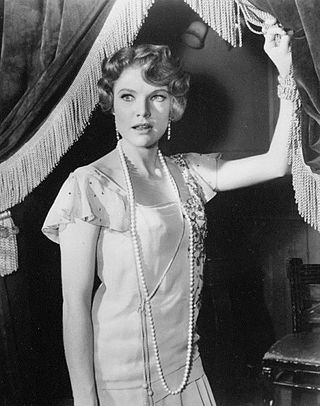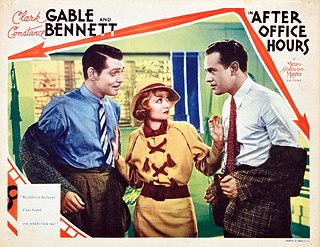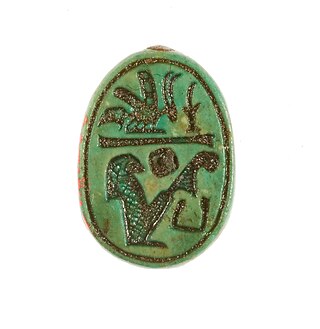"The Sixteen-Millimeter Shrine", starring Ida Lupino, is episode four of the American television series The Twilight Zone. It originally aired on October 23, 1959, on CBS. The title is a reference to 16 mm film.

"The Hitch-Hiker" is the sixteenth episode of the American television anthology series The Twilight Zone which originally aired on January 22, 1960, on CBS. It is based on Lucille Fletcher's radio play The Hitch-Hiker. It is frequently listed among the series' greatest episodes.
"Long Live Walter Jameson" is episode 24 of the American television anthology series The Twilight Zone.

"A Stop at Willoughby" is episode 30 of the American television anthology series The Twilight Zone. Rod Serling cited this as his favorite story from the first season of the series.
"A World of His Own" is episode thirty-six of the American television anthology series The Twilight Zone. It was the last episode of the show's first season and essentially comedic in tone. It originally aired on July 1, 1960, on CBS.

"The Trouble with Templeton" is episode 45 of the American television anthology series The Twilight Zone starring Brian Aherne, Pippa Scott and Sydney Pollack. The episode originally aired on December 9, 1960 on CBS.

She Stoops to Conquer is a comedy by Oliver Goldsmith, first performed in London in 1773. The play is a favourite for study by English literature and theatre classes in the English-speaking world. It is one of the few plays from the 18th century to have retained its appeal and is still regularly performed. The play has been adapted into a film several times, including in 1914 and 1923. Initially the play was titled Mistakes of a Night and the events within the play take place in one long night. In 1778, John O'Keeffe wrote a loose sequel, Tony Lumpkin in Town.

The Old Wives' Tale is a novel by Arnold Bennett, first published in 1908. It deals with the lives of two very different sisters, Constance and Sophia Baines, following their stories from their youth, working in their mother's draper's shop, into old age. It covers a period of about 70 years from roughly 1840 to 1905, and is set in Burslem and Paris. It is generally regarded as one of Bennett's finest works.
"The Bewitchin' Pool" is the 156th and last episode of the first incarnation of the American anthology television series The Twilight Zone. It originally aired on June 19, 1964 on CBS.
An Occurrence at Owl Creek Bridge is a 1961 French short film, almost without dialogue. It was based on the 1890 American short story of the same name by American Civil War soldier, wit, and writer Ambrose Bierce. It was directed by Robert Enrico and produced by Marcel Ichac and Paul de Roubaix with music by Henri Lanoë. It won awards at the Cannes Film Festival and the Academy Awards. The film was later screened on American television as episode 22 of the fifth season of The Twilight Zone on 28 February 1964.

Celia Lovsky was an Austrian-American actress. She was born in Vienna, daughter of Břetislav Lvovsky (1857–1910), a minor Czech opera composer. She studied theater, dance, and languages at the Austrian Royal Academy of Arts and Music. She is best known to fans of Star Trek as the High Priestess T'Pau, and to fans of The Twilight Zone as the aged daughter of an eternally youthful Hollywood actress.

"The Fugitive" is episode 90 of the American television anthology series The Twilight Zone.

After Office Hours is a 1935 crime drama film directed by Robert Z. Leonard and starring Clark Gable and Constance Bennett. The screenplay was written by Herman Mankiewicz.
"Young Man's Fancy" is episode 99 of the American television anthology series The Twilight Zone.

Death on the Nile is a 1978 British mystery film based on Agatha Christie's 1937 novel of the same name, directed by John Guillermin and adapted by Anthony Shaffer. The film features the Belgian detective Hercule Poirot, played by Peter Ustinov for the first time, plus an all-star supporting cast that includes Maggie Smith, Angela Lansbury, Bette Davis, Mia Farrow, Jane Birkin, David Niven, George Kennedy, and Jack Warden. The film is a standalone sequel to the 1974 film Murder on the Orient Express.

Gidget Goes to Rome is a 1963 Columbia Pictures Eastmancolor feature film starring Cindy Carol as the archetypal high school teen surfer girl originally portrayed by Sandra Dee in the 1959 film Gidget. The film is the third of three Gidget films directed by Paul Wendkos and expands upon Gidget's romance with boyfriend Moondoggie. The screenplay was written by Ruth Brooks Flippen based on characters created by Frederick Kohner. Veterans of previous Gidget films making appearances include James Darren as "Moondoggie", Joby Baker, and Jean "Jeff" Donnell as Gidget's mom, Mrs. Lawrence.

Scarabs are beetle-shaped amulets and impression seals which were widely popular throughout ancient Egypt. They still survive in large numbers today, and are popular among collectors of ancient artifacts. Through their inscriptions and typology, they prove to be an important source of information for archaeologists and historians of the ancient world, and represent a significant body of ancient Egyptian art.

It's a Big Country: An American Anthology is a 1951 American anthology film consisting of eight segments by seven directors: Richard Thorpe, John Sturges, Charles Vidor, Don Weis, Clarence Brown, William A. Wellman and Don Hartman.

The Law and the Lady is a 1951 American comedy film directed by Edwin H. Knopf and starring Greer Garson, Michael Wilding and Fernando Lamas. It is not related to the Wilkie Collins novel The Law and the Lady. Very loosely based on the 1925 play The Last of Mrs. Cheyney by Frederick Lonsdale, the action is transferred to the turn of the century, the names are all changed, and the first half of the film shows the history of the two thieves. Previous film versions of the story, made in 1929, starring Norma Shearer, and 1937, starring Joan Crawford, retained the play's contemporary setting, included a crew of confederates, and opened with Mrs. Cheyney as an established figure in society. This film also ends differently from the play, with the partners in crime ending as romantic partners but going back to England to face the music for their very first swindle. In the play and in the two other films, Charles leaves and Mrs. Cheyney accepts Lord Dilling, who kisses her and declares: “That's the Last of Mrs. Cheyney!”












